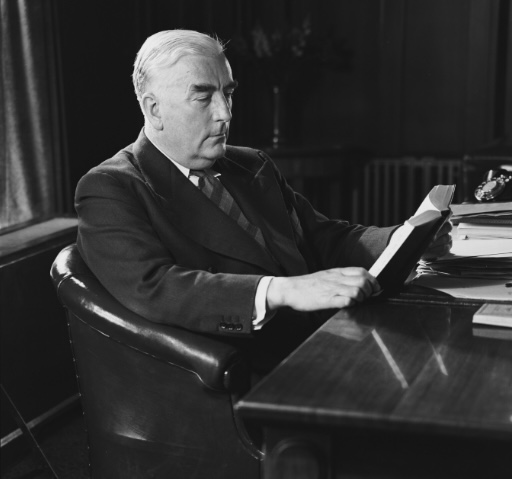Robert Menzies, Senate Campaign 1953: Opening Speech (1953)
Amidst frequent complaints about the ‘short’ nature of Australia’s three-year electoral cycle, which is alleged to contribute to short-term decision making on the part of our politicians, it is often forgotten that our elections are already less frequent than they used to be. This is because standalone half-Senate elections were a notable feature of Australian politics in the mid 20th century.
They occurred because the fixed six-year terms of senators, can easily become out of sync with those of the House of Representatives, which are explicitly not ‘fixed’ as the Prime Minister has the authority to call an early election (almost) whenever they choose. This was not entirely clear in the early days after federation, when the PM was still expected to give the Governor-General a reason for why they needed the House dissolved. But it quickly became established that in most circumstances the Governor-General is expected to act on the advice of the Prime Minister, who thereby gained a distinct tactical advantage from being able to force an election at a politically opportune time.
The first early election called was the double dissolution sought by Liberal Prime Minister Joseph Cook in 1914, and even though he was able to give a clear and constitutionally recognised ‘reason’ in the Senate blocking key pieces of legislation, there was still some speculation over whether or not the dissolution would be granted. The fact that it was proved to be a key moment in establishing a precedent of prime ministerial prerogative.
The first ever standalone half-Senate election was held in 1953, and necessitated by a complex array of factors. In the event of a double dissolution (which Menzies called in 1951) the constitution dictates that senators are regarded to have taken their seats (i.e. their term began) the July preceding the dissolution, so that of 1950. But House terms begin when the House first sits, which was almost a year later in June 1951. Menzies could have resolved the issue by going to an early election, but given his government was still recovering from the fallout of the inflationary crisis precipitated by the Korean War Wool boom, he was in no mood to do that.
Menzies then got to have his cake and eat it too, by using the fact that the election cycles were out of line, as a pretext to go to an early election in 1955, which capitalised on the Labor Split to secure an overwhelming victory. The cycles then became unaligned once more for equally tactical reasons, as Menzies decided to go early in 1963, because he was sick of dealing with a precarious majority produced by an extremely narrow result at the 1961 election. The reason other early House elections have not produced standalone half-Senate elections, is because the constitution allows for the Senate election to be held up to a year before the new term will start, to allow it some flexibility in keeping in sync with the House. But Menzies was going so early in 1963 that this was not an option.
Menzies’s decision, then forced him into another standalone half-Senate election in 1964, an extra campaign that was so arduous that it has been directly credited with prompting Menzies’s decision to finally retire. The election cycles would remain out of sync until they were realigned by another double dissolution in 1974, prompting two more standalone half-senate elections (1967 and 1970).
To this day there have only been four standalone half-Senate elections, but the possibility for a future misalignment remains. This is because the Australian people have twice voted down constitutional referenda on ‘simultaneous elections’ because they ultimately involved shortening the length of Senate terms to be that of two House terms (however short they turned out to be) and therefore would have weakened the institutional power of the Senate.
You might also like...
Sign up to our newsletter
Sign up for our monthly newsletter to hear the latest news and receive information about upcoming events.


